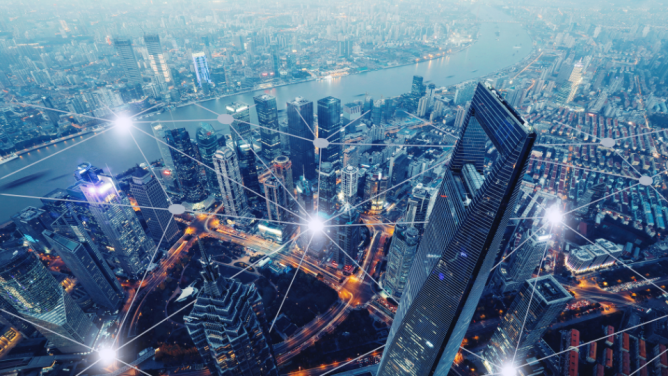The arrival of 5G has sparked fierce debate across the globe and in France, in particular. During the spectrum auctions, those opposed to it denounced its impact on health, the advancement of the surveillance society, and a large environmental bill. Those in favour of it have highlighted the new applications made possible by connectivity, in particular for autonomous vehicles and “Industry 4.0”. Even the French President himself has stepped into the arena, comparing the criticisms of 5G to those of the Amish community against the customs of the modern world, while his opponents signalled a “consumer race“. In brief, the issue has divided many.
Leonard wanted to revisit the question of how much energy the deployment of 5G would consume. Are we able to come up with ways to use 5G that would balance the environmental impact of developing new infrastructure and terminals and the energy they consume?
The immediate environmental impact of 5G
The High Council on Climate (an independent executive council in the Government of France which produces reports on the progress of the country towards its climate commitments) has just published a report entitled “Managing the carbon impact of 5G”, commissioned by the Senate (a house of the French Parliament). For the first time in France, this 30-page document provides a detailed study on the subject. By 2030 in France, the CO2 equivalent of deploying 5G could amount to between 2.7 mt and 6.7 mt – compared with the 15 mt CO2 equivalent attributed to digital technology in 2020. This increase mainly concerns the terminals, which would have to be renewed on a huge scale. According to Hugues Ferreboeuf, director of the “Digital Sobriety” project at think-tank The Shift Project, a 15% increase in smartphone sales is expected over the next few years because of 5G.
The figures are also significant when it comes to energy. The High Council on Climate estimates that deploying 5G will generate between 16 and 40 TWh by 2030, a figure equivalent to between 5% and 13% of the country’s residential and tertiary electricity consumption. In the city of Luoyang, in north-western China, the operator Unicom has had to put its masts on standby overnight to limit consumption.
However, 5G is more economical when in constant use: although a mast consumes three times as much, it is also able to handle 15 times more traffic thanks to small cells and “Massive MIMO“ (Multiple-Input Multiple-Output) technologies. The increase in consumption is explained by what is known as the “Jevons paradox“: as the efficiency with which a resource is used increases, the total consumption of this resource also tends to increase.
A move towards virtuous applications: a promise that needs to be kept.
For advocates of 5G, the energy balance of the new technology must take into account new uses made possible by the technology. The increased throughput, reduced latency, and increased density of connectable terminals do in fact hold great promise. The World Economic Forum highlights the contribution that predictive maintenance, optimised smart grids and logistics, intelligent lighting and better monitoring of consumption will make. This year’s health crisis has also shown that many appointments can be held remotely. A life cycle analysis comparing videoconferencing and face-to-face meetings showed that digital meetings (in the worst case scenario) consume just 6.7% of the energy that physical meetings do.
As we can see, the first applications are emerging. Coupled with the IoT, 5G allows for better integration of energy networks, for example. At its Austrian headquarters, Siemens has deployed one of the first microgrid projects led using 5G. The wireless network makes it possible to adapt energy distribution to demand in real time. In terms of automation, the applications are also promising. Thanks to 5G, Ericsson has automated operations at Aitik’s Swedish mine and is now claiming fuel saving of around 10%, equal to a reduction in CO2 of 9,400 tonnes. In construction, 5G is paving the way for remote operations, which would help to limit the movement of machines and people. Korean manufacturer Doosan teamed up with LG to operate a 40-tonne crawler excavator located 8,500 km away. The management of urban networks should benefit from 5G’s stability. In the United Kingdom, Northumbrian Water has become the first water management company to use the technology to help manage its networks. Using augmented reality mapping, wireless Geographic Information Systems (GIS) and monitoring applications, the operator hopes to optimise water management. 5G is also opening up new opportunities in terms of monitoring ecosystems. The Finnish Environment Institute has joined forces with Nokia to analyse the development of highly toxic blue-green algae in the Baltic Sea, where 5G is making it possible to send drone images in real time, thereby helping the institution to take action.
Towards responsible 5G?
Given everything that 5G promises, its seems unreasonable to imagine that it will not continue to be deployed. All that remains is to support its development in the most positive way possible. To achieve this, there are a certain number of possible routes. Peak load management or intelligent cooling technologies can save significant amounts of energy. China Tower and Huawei are saving 4,130 kWh of electricity per site per year thanks to their 5G Power solution. Network sharing also holds great promise. McKinsey explains that sharing “small cell” infrastructure could help to limit the scale of deployment while saving nearly 40% in costs! In short, although it is not realistic to stop 5G, it is essential that we develop it with a degree of restraint.


